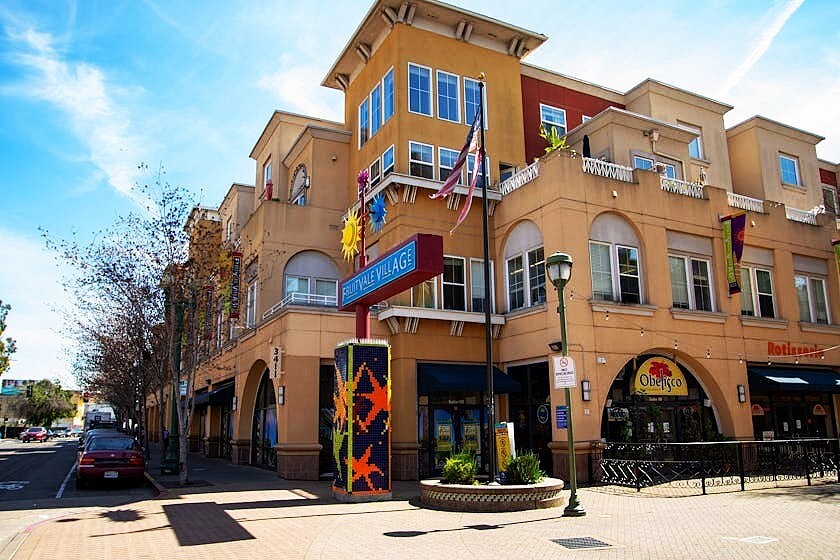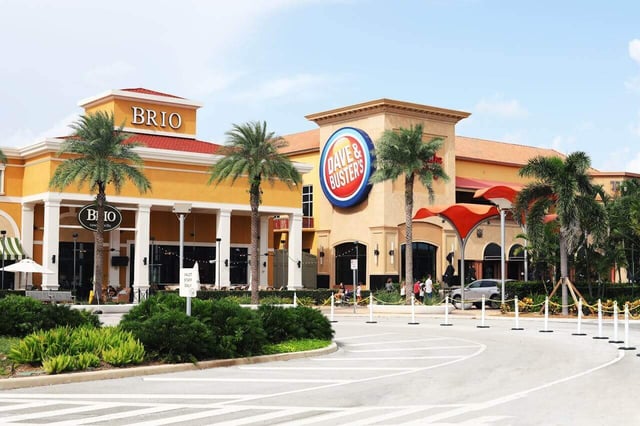Physical Stores In The E-Commerce Era: Threat Or Ultimate Opportunity?
September 4th, 2025
5 min read

E-commerce and physical stores now work together within a connected retail ecosystem. Retailers that utilize omnichannel strategies, such as online browsing with in-store pickup, real-time inventory management, and engaging customer experiences, can enhance store performance and property value. Investors should focus on properties with strong tech infrastructure, flexible layouts, and tenants that are well-suited for hybrid retail models.
What if the biggest disruption to retail didn't destroy the store, but made it more valuable to investors than ever before?
When Amazon first entered the market in the late 1990s, it felt like retail’s version of the asteroid that wiped out the dinosaurs. Malls started thinning out, headlines warned of extinction, and investors braced for a landscape ruled entirely by clicks.
But the predicted retail apocalypse never came.
Instead, brick-and-mortar stores regrouped, evolved, and began working with their digital counterparts rather than against them. What emerged wasn’t the death of physical retail, but its rebirth—smarter, more connected, and surprisingly resilient.
For new commercial real estate investors, this shift opens up opportunities where others once saw decline. Understanding how digital and physical retail now work in tandem is essential for identifying long-term value in today’s shopping centers.
Retail Didn't Disappear. It Reinvented Itself.
Despite the rise of e-commerce, the vast majority of purchases still happen in physical stores. In fact, as of 2025, the US Census Bureau reported that 85% of retail transactions in the U.S. take place in person.
Even Amazon (the very brand that rewired how we shop) is investing in real-world locations. The expansions of Amazon Fresh stores, Amazon Style, and Whole Foods demonstrate that digital convenience alone isn’t enough. Customers still want to see, feel, and take home their purchases right away. That physical, sensory component of retail isn’t going anywhere. It’s just being refined.
Online retail may have changed the playbook, but it didn’t bench physical stores. It pushed them to adapt. Today’s most successful retailers understand that the best customer journeys don’t start or end in a store—they include the store as part of a wider, connected experience. That insight has breathed new life into the value of retail real estate.
Want to dig deeper into retail real estate trends and fundamentals?
Check out the RockStep Capital Learning Center and YouTube channel for beginner-friendly guides and engaging video insights built for new investors.
Omnichannel Retail: The New Rhythm Of Shopping
Picture modern retail as a symphony. E-commerce is the piano—precise, agile, and able to deliver on its own. Physical retail is the full orchestra—layered, immersive, and capable of stirring emotional connection. When they play together, they don’t clash. They harmonize.
That harmony is called omnichannel retail.
Consumers no longer shop in single lanes. They browse on phones, price-check on laptops, and complete purchases in-store, or flip that process entirely. The most successful retailers today don’t force shoppers into a fixed path. They build fluid, flexible ecosystems that follow the customer’s lead.
Retailers embracing omnichannel are doing things like:
- Syncing in-store inventory with online platforms
- Offering curbside pickup, same-day delivery, or BOPIS (Buy Online, Pick Up In Store)
- Integrating loyalty programs that work both in person and online
- Using data from online behavior to personalize in-store experiences
This strategy transforms a single location into something much more powerful: part showroom, part warehouse, and part relationship builder.
The Store As A Local Engine Of Speed & Service
If traditional retail was like a one-lane road, today’s stores are more like multi-purpose hubs. They don’t just sell products. They move them faster, fulfill orders smarter, and bring logistics closer to where customers live.
Target's Approach To The Digital-Physical Balance
Target leads in this space. A large percentage of its digital orders are now fulfilled from physical stores rather than warehouses. This approach reduces shipping costs, speeds up delivery, and boosts store-level inventory turnover.
Walmart's Approach To The Digital-Physical Balance
Walmart similarly uses its footprint. This company treats each location as both a retail space and a last-mile distribution point. In effect, they’ve transformed the average shopping center into a micro-logistics engine.
From an investor’s perspective, this is game-changing. There is now a precedent for transforming brick-and-mortar retail locations into active, operational assets within a tenant’s supply chain.
BOPIS: Where Digital Meets Doorstep
Few retail innovations blend online and offline more successfully than Buy Online, Pick Up In Store (BOPIS). It’s the modern shopper’s best-of-both-worlds solution.
Instead of waiting days for delivery, customers can browse online, purchase what they need, and pick it up just hours later, often without leaving their car. It’s fast, flexible, and frictionless.
Retailers benefit, too. BOPIS drives in-store traffic and increases average order value, as many customers grab additional items during their pickup visit.
Traits Of The Hybrid BOPIS Model
Shopping centers that support this hybrid model often include:
- Designated curbside pickup areas
- Clear directional signage
- Parking lot layouts built for short-term visits
- Tech-friendly tenants who can manage real-time inventory and customer alerts
It’s no longer about just having a strong anchor tenant. It’s about having an ecosystem that supports the new rhythm of retail.
In-Store Tech: Turning Browsing Into Personalization
The old retail model relied heavily on foot traffic and merchandising. Today, technology does the heavy lifting behind the scenes and right on the sales floor.
At Nike Live stores, mobile apps help customers reserve sizes, scan for product reviews, and check out without visiting a register. At Sephora, augmented reality mirrors enable shoppers to virtually try on makeup, compare shades, and link their preferences to their personal profiles.
The Impact For Shoppers & Investors Like You
These innovations don’t replace employees; instead, they amplify them. They transform shopping into an interactive, personalized experience that feels curated and convenient.
For investors, tenants that invest in tech signal long-term relevance. These are the kinds of retailers that are adapting proactively to consumer behavior, rather than reacting after the fact.
Returns Become A Relationship Tool
Returns have long been the retail equivalent of a leaky faucet: annoying, costly, and hard to fix. But smart retailers are turning this pain point into a valuable customer touchpoint. The key isn’t just making returns easy. It’s using them as a reason to bring shoppers back through the door.
Take Kohl’s and Amazon, for example. Through their partnership, Amazon customers can drop off returns at any Kohl’s store with no box or label required. The process is simple, fast, and customer-friendly. And here’s the kicker: many of those returners stick around to browse, and a large portion end up making additional purchases. That’s foot traffic and conversion, all born from a return counter.
This shift reflects a larger trend. Retail isn’t just about point-of-sale anymore. It’s about the total relationship a customer has with a brand. Shopping centers that facilitate this relationship (through pickup, returns, service, or convenience) become more than just destinations. They become part of the shopper’s weekly routine.
Why This Matters For Investors
If you're new to commercial real estate investing, here’s the key takeaway: properties that support omnichannel strategies are positioned for long-term stability and upside.
Today’s most resilient retail tenants do more than sell goods. They:
- Blend digital tools with physical presence
- Use store footprints to lower logistics costs
- Offer flexible services like BOPIS and in-store returns
- Create personalized customer experiences through tech
As a result, the properties they occupy perform better. They see higher traffic, stronger sales, and lower turnover—three key metrics every investor should closely monitor.
What To Look For In Modern Retail Centers
If you're evaluating shopping centers to invest in, prioritize those with:
- A mix of tech-enabled, omnichannel-friendly tenants
- Infrastructure that supports curbside pickup and delivery staging
- Flexible floor plans that can adapt to future retail concepts
- Anchors that fulfill daily needs like groceries or fitness
- Locations near high-density residential areas
These characteristics help ensure that a property will stay relevant as shopping behavior continues to evolve.
Retail Real Estate's Next Chapter Is Already Being Written
The retail sector didn’t get left behind by e-commerce. It got smarter, faster, and more customer-driven. In-person shopping has found new life through digital integration. Stores that once looked outdated are now operating as neighborhood-level fulfillment centers, experience hubs, and brand connectors.
For new investors, this evolution presents a valuable opportunity. Shopping centers that embrace omnichannel trends aren’t fading. They’re becoming essential infrastructure for the next generation of commerce. They serve multiple roles in a community, delivering flexible value to both tenants and shoppers. In a market that rewards adaptability, these hybrid spaces are positioned to lead.
Topics:


























